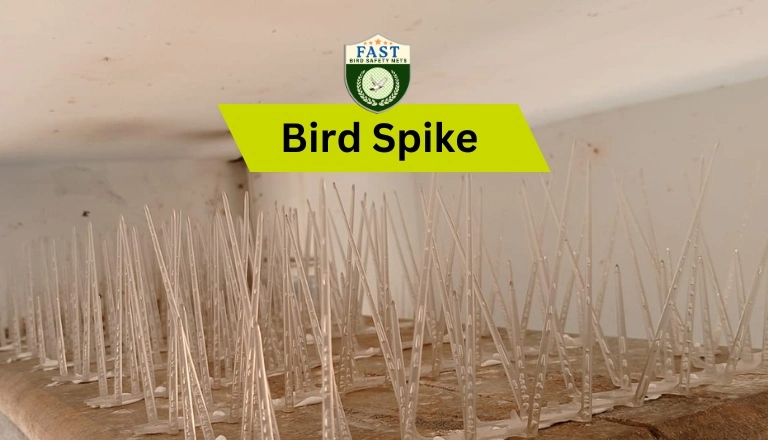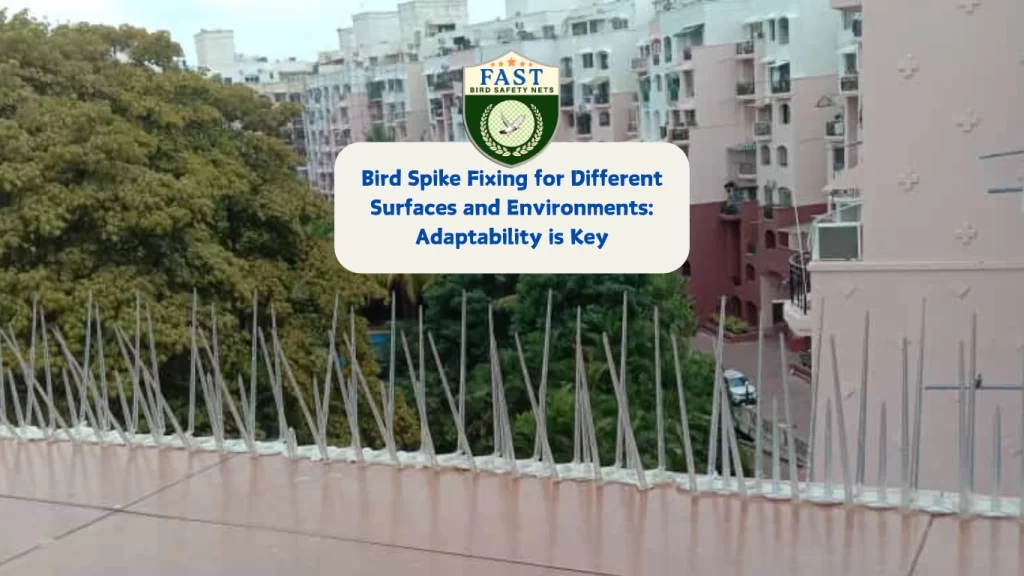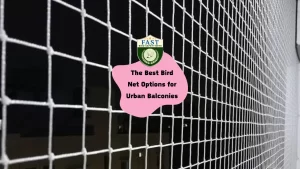Birds can often become a nuisance in urban environments, causing damage to property and posing health risks. Bird spikes are an effective solution to deter birds from roosting and nesting on surfaces such as ledges, roofs, and signs. However, fixing bird spikes to different surfaces and environments requires careful consideration and adaptability. In this comprehensive guide, we’ll explore the various methods and techniques for bird spike installation across different surfaces, emphasizing the importance of adaptability for optimal effectiveness.
Understanding Bird Spikes: Bird spikes are physical bird deterrents consisting of rows of pointed rods or spikes that are typically made from stainless steel, plastic, or polycarbonate. These spikes create an uneven surface, making it uncomfortable and impractical for birds to land or roost. Bird spikes are versatile and can be installed on a wide range of surfaces to effectively deter birds without causing harm.
Factors to Consider Before Installation: Before proceeding with bird spike installation, several factors should be considered:
- Surface Type: Assess the surface where the bird spikes will be installed, including its material, texture, and slope.
- Environmental Conditions: Consider the prevailing weather conditions, exposure to sunlight, and presence of corrosive elements that may affect the durability of the bird spikes.
- Bird Species: Understand the behavior and habits of the bird species causing the problem to determine the most effective placement and configuration of bird spikes.
- Regulatory Compliance: Familiarize yourself with local regulations and guidelines governing bird control measures to ensure compliance and avoid potential legal issues.

Methods for Bird Spike Fixing:
1. Adhesive Fixing: Adhesive fixing is a common method used to install bird spikes on flat and smooth surfaces such as ledges, beams, and signs. High-quality adhesive, specifically designed for outdoor use and capable of withstanding varying weather conditions, is applied to the base of the bird spikes. The spikes are then firmly pressed onto the surface, ensuring proper adhesion. Adhesive fixing offers a discreet and permanent solution for bird control without damaging the underlying surface.
2. Screw Fixing: Screw fixing is suitable for surfaces that require additional stability and support, such as wooden beams, eaves, and roof edges. Stainless steel screws are used to secure the bird spikes onto the surface, providing a robust and long-lasting deterrent against birds. Pre-drilling pilot holes may be necessary to prevent surface damage and ensure precise alignment of the spikes. Screw fixing offers flexibility in terms of adjustment and removal, making it ideal for temporary installations or areas with changing bird activity.
3. Clamping Fixing: Clamping fixing is a versatile method that allows bird spikes to be securely attached to pipes, poles, and irregularly shaped surfaces. Adjustable clamps or brackets are used to clamp the spikes onto the surface, providing stability and preventing movement. This method is particularly effective for cylindrical or rounded structures where other fixing methods may be impractical. Clamping fixing offers easy installation and removal, making it suitable for temporary bird control measures or areas requiring frequent maintenance.
4. Magnetic Fixing: Magnetic fixing is a innovative method used to install bird spikes on metallic surfaces such as steel beams, air conditioning units, and machinery. Magnetic base plates are attached to the underside of the bird spikes, allowing them to be easily positioned and secured onto metal surfaces without the need for drilling or adhesive. Magnetic fixing offers quick and hassle-free installation, making it an ideal solution for temporary bird control applications or areas where drilling is not feasible.
Adaptability and Customization: Adaptability is key when it comes to bird spike fixing, as different surfaces and environments may require unique solutions. Manufacturers offer a wide range of bird spike variants with adjustable bases, flexible arms, and customizable configurations to accommodate various installation requirements. Additionally, accessories such as corner pieces, end caps, and extension rods allow for seamless integration and customization, ensuring optimal coverage and effectiveness.
Maintenance and Durability: Regular maintenance is essential to ensure the long-term effectiveness of bird spikes. Inspect the spikes periodically for signs of damage, corrosion, or accumulation of debris. Clean the spikes as needed to remove dirt, bird droppings, and other contaminants that may reduce their deterrent effect. Replace damaged or worn-out spikes promptly to prevent birds from finding alternative roosting spots. Choosing high-quality bird spikes made from durable materials and weather-resistant coatings will enhance their longevity and performance, minimizing the need for frequent maintenance and replacement.
Conclusion: Bird spikes are a versatile and effective solution for deterring birds from roosting and nesting on various surfaces and environments. By understanding the different methods for bird spike fixing and prioritizing adaptability, property owners can effectively address bird control challenges while ensuring minimal impact on the aesthetic and functionality of their surroundings. Whether it’s adhesive fixing for ledges, screw fixing for eaves, or magnetic fixing for metallic surfaces, choosing the right installation method and customization options is crucial for achieving optimal results. With proper installation, maintenance, and durability considerations, bird spikes can provide long-term bird control solutions for residential, commercial, and industrial settings, promoting a safer and more hygienic environment for occupants and visitors alike.






